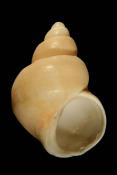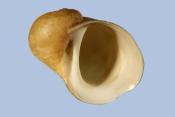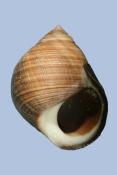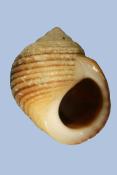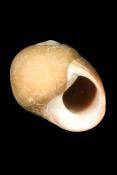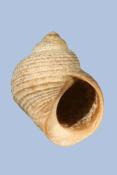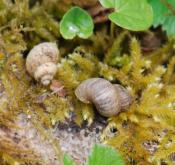This group includes the Winkles (Littorinids) and Chink shell (Lacunids). These two groups are distinguished by the presence of a 'slit' in the column of the chink shells (hence their name). The Littorinids in particular are a very variable group which has led to a degree of controversy in their taxonomy. Have evolved to live in some of the most extreme areas of the rocky shore and are ubiquitus on almost all rocky shores around the UK. They feed by scraping up seaweed or microscopic algae using a ribbon of teeth known as a radula.
The sexes are separate and the species display a variety of reproductive strategies depending on where on the shore they live ranging from laying eggs, to dispersing eggs and sperm into the water to internal copulation either releasing egg capsules into the water column to directly giving birth to juvenile snails.
One species within the group in particular (Littorina littorea) has been, and continues to be, an important source of food. It has been found in prehistoric shellfish middens throughout Europe and even today there is an extensive harvest of the species in certain parts of the UK. They are normally boilled in salted water and then picked from the shell.
| Lacuna crassior | Lacuna pallidula | Lacuna vincta | Littorina littorea |
| Littorina nigrolineata | Littorina obtusata | Littorina saxatilis/arcana agg. | Pomatias elegans |
Child taxon/taxa with no image
- Lacuna crassior var. glacialis
- Lacuna parva
- Littorina arcana
- Littorina mariae
- Littorina neglecta
- Littorina obtusata var. aestuarii
- Littorina obtusata var. arctica
- Littorina obtusata var. palliata
- Littorina saxatilis tenebrosa
- Littorina saxatilis var. groenlandica
- Littorina saxatilis var. rudis
- Melarhaphe neritoides
- Skeneopsis planorbis
- Skeneopsis planorbis var. trochiformis

